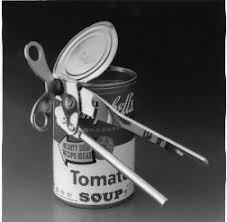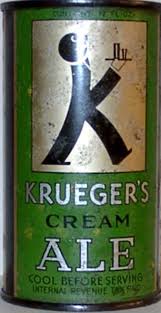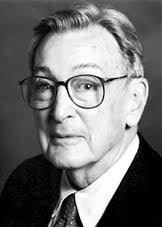British merchant Peter Durand made an impact on food preservation with his 1810 patenting of the tin can. In 1813, John Hall and Bryan Dorkin opened the first commercial canning factory in England. In 1846, Henry Evans invents a machine that can manufacture tin cans at a rate of sixty per hour. An significant increase over the previous rate of only six per hour.








First Patented Can Opener
The first tin cans were so thick they had to be hammered open. As cans became thinner, it became possible to invent dedicated can openers. In 1858, Ezra Warner of Waterbury, Connecticut patented the first can opener. The U.S. military used it during the Civil War. In 1866, J. Osterhoudt patented the tin can with a key opener that you can find on sardine cans.
William Lyman - Classic Can Opener
The inventor of the familiar household can opener was William Lyman. William Lyman patented a very easy to use can opener in 1870. The kind with the wheel that rolls and cuts around the rim of a can. The Star Can Company of San Francisco improved William Lyman's can opener in 1925 by adding a serrated edge to the wheel. An electric version of the same type of can opener was first sold in December of 1931.Beer in a Can
On January 24, 1935, the first canned beer, "Krueger Cream Ale," was sold by the Kruger Brewing Company of Richmond, VA.Pop-Top Can
In 1959, Ermal Fraze invented the pop-top can (or easy-open can) in Kettering, Ohio.Aerosol Spray Cans
The concept of an aerosol originated as early as 1790, when self-pressurized carbonated beverages were introduced in France.
Erik Rotheim
On November 23, 1927, Norwegian engineer Erik Rotheim (also spelled Eric Rotheim) patented the first aerosol can and valve that could hold and dispense products and propellant systems. This was the forerunner of the modern aerosol can and valve. In 1998, the Norwegian post office issued a stamp celebrating the Norwegian invention of the spray can.
On November 23, 1927, Norwegian engineer Erik Rotheim (also spelled Eric Rotheim) patented the first aerosol can and valve that could hold and dispense products and propellant systems. This was the forerunner of the modern aerosol can and valve. In 1998, the Norwegian post office issued a stamp celebrating the Norwegian invention of the spray can.
 Photo courtesy Eric Rotheim's original aerosol-can patent includes the same basic elements found in cans today. |
Lyle Goodhue and William Sullivan
During World War II, the U.S. government funded research into a portable way for service men to spray malaria-carrying bugs. Department of Agriculture researchers, Lyle Goodhue and William Sullivan, developed a small aerosol can pressurized by a liquefied gas (a fluorocarbon) in 1943. It was their design that made products like hair spray possible, along with the work of another inventor Robert Abplanalp.
During World War II, the U.S. government funded research into a portable way for service men to spray malaria-carrying bugs. Department of Agriculture researchers, Lyle Goodhue and William Sullivan, developed a small aerosol can pressurized by a liquefied gas (a fluorocarbon) in 1943. It was their design that made products like hair spray possible, along with the work of another inventor Robert Abplanalp.
Robert Abplanalp – Valve Crimp
In 1949, 27-year-old Robert H. Abplanalp’s invention of a crimp on valve enabled liquids to be sprayed from a can under the pressure of an inert gas. Spray cans, mainly containing insecticides, were available to the public in 1947 as a result of their use by U.S. soldiers for preventing insect-borne diseases. Abplanalp’s invention made of lightweight aluminum made the cans a cheap and practical way to dispense liquids foams, powders, and creams. In 1953, Robert Abplanal patented his crimp-on valve “for dispensing gases under pressure.” His Precision Valve Corporation was soon earning over $100 million manufacturing one billion aerosol cans annually in the United States and one-half billion in 10 other countries.
In 1949, 27-year-old Robert H. Abplanalp’s invention of a crimp on valve enabled liquids to be sprayed from a can under the pressure of an inert gas. Spray cans, mainly containing insecticides, were available to the public in 1947 as a result of their use by U.S. soldiers for preventing insect-borne diseases. Abplanalp’s invention made of lightweight aluminum made the cans a cheap and practical way to dispense liquids foams, powders, and creams. In 1953, Robert Abplanal patented his crimp-on valve “for dispensing gases under pressure.” His Precision Valve Corporation was soon earning over $100 million manufacturing one billion aerosol cans annually in the United States and one-half billion in 10 other countries.



No comments:
Post a Comment